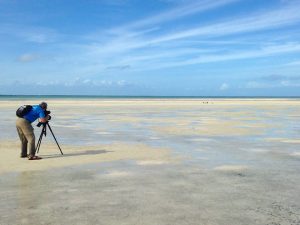Piping Plovers in the Bahamas
Our Work isn’t Done – the Ongoing Importance of Band Resighting
By Todd Pover, Senior Wildlife Biologist
Earlier in January, I attended the Abaco Science Alliance Conference to make a presentation about recent conservation and research developments for piping plovers in the Bahamas. This marks the eighth year, starting in 2011, either solo or with CWF staff and other colleagues, that I have been able to follow piping plovers to their wintering grounds in the Bahamas to conduct work to better understand and help recover this at-risk species. And in another sense, to be an international ambassador for piping plovers.

Over that time, the focus of those trips has varied widely, including conducting surveys for the International Piping Plover Census in 2011 and 2016, improving our understanding of how piping plovers use the various habitats, engaging students with our Shorebird Sister School Network from 2014-17, helping Friends of the Environment, our primary partner there, integrate piping plovers into their educational/school programs, building conservation partnerships, and even producing a video. Tremendous positive changes have occurred in that time with regard to awareness of and attitudes towards piping plovers in the Bahamas and some significant conservation progress has been made, most notably the establishment of several new national parks by the Bahamian government that help protect piping plovers and other shorebirds.